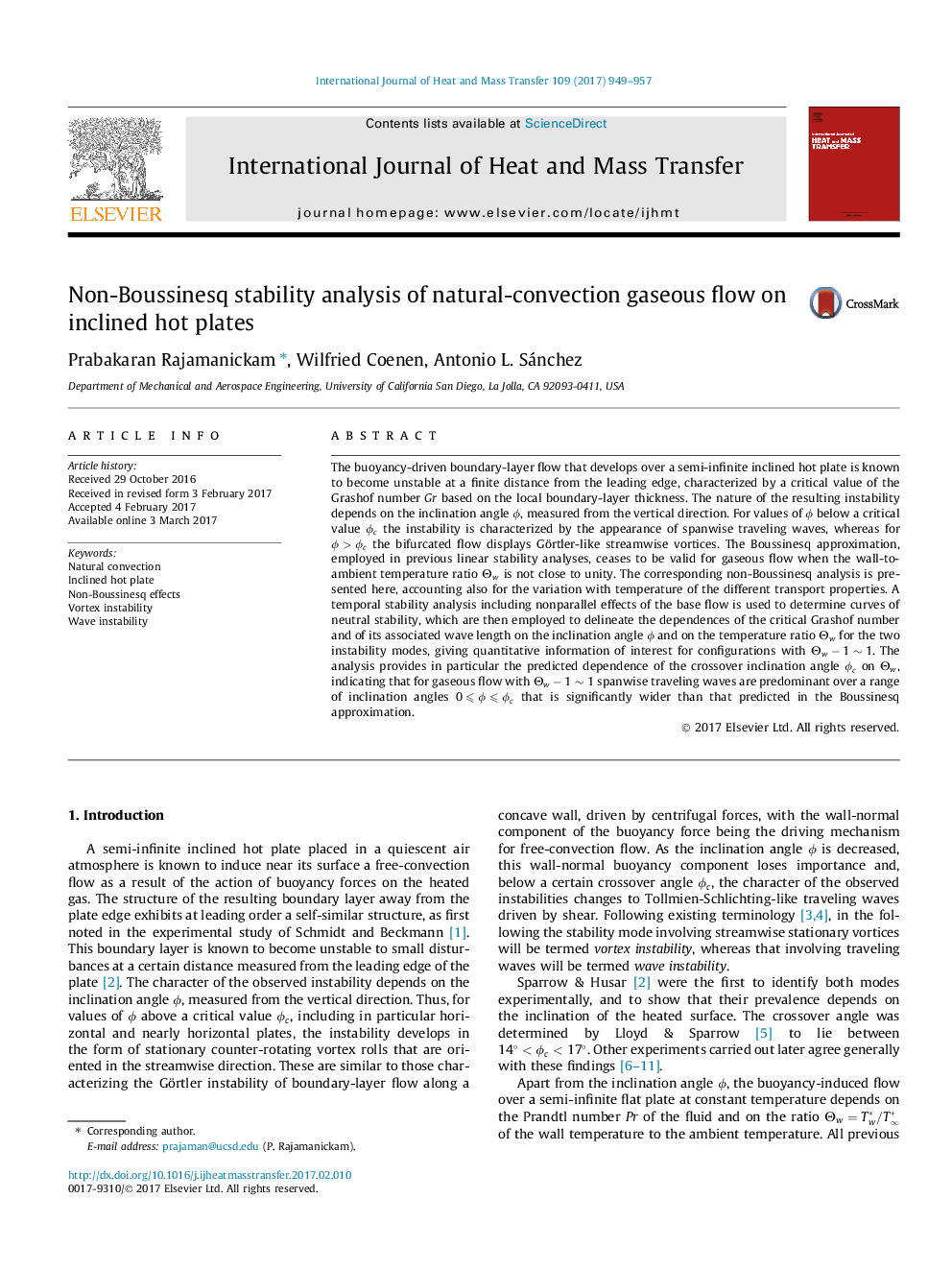| Article ID | Journal | Published Year | Pages | File Type |
|---|---|---|---|---|
| 4994542 | International Journal of Heat and Mass Transfer | 2017 | 9 Pages |
Abstract
The buoyancy-driven boundary-layer flow that develops over a semi-infinite inclined hot plate is known to become unstable at a finite distance from the leading edge, characterized by a critical value of the Grashof number Gr based on the local boundary-layer thickness. The nature of the resulting instability depends on the inclination angle Ï, measured from the vertical direction. For values of Ï below a critical value Ïc the instability is characterized by the appearance of spanwise traveling waves, whereas for Ï>Ïc the bifurcated flow displays Görtler-like streamwise vortices. The Boussinesq approximation, employed in previous linear stability analyses, ceases to be valid for gaseous flow when the wall-to-ambient temperature ratio Îw is not close to unity. The corresponding non-Boussinesq analysis is presented here, accounting also for the variation with temperature of the different transport properties. A temporal stability analysis including nonparallel effects of the base flow is used to determine curves of neutral stability, which are then employed to delineate the dependences of the critical Grashof number and of its associated wave length on the inclination angle Ï and on the temperature ratio Îw for the two instability modes, giving quantitative information of interest for configurations with Îw-1â¼1. The analysis provides in particular the predicted dependence of the crossover inclination angle Ïc on Îw, indicating that for gaseous flow with Îw-1â¼1 spanwise traveling waves are predominant over a range of inclination angles 0⩽Ï⩽Ïc that is significantly wider than that predicted in the Boussinesq approximation.
Keywords
Related Topics
Physical Sciences and Engineering
Chemical Engineering
Fluid Flow and Transfer Processes
Authors
Prabakaran Rajamanickam, Wilfried Coenen, Antonio L. Sánchez,
